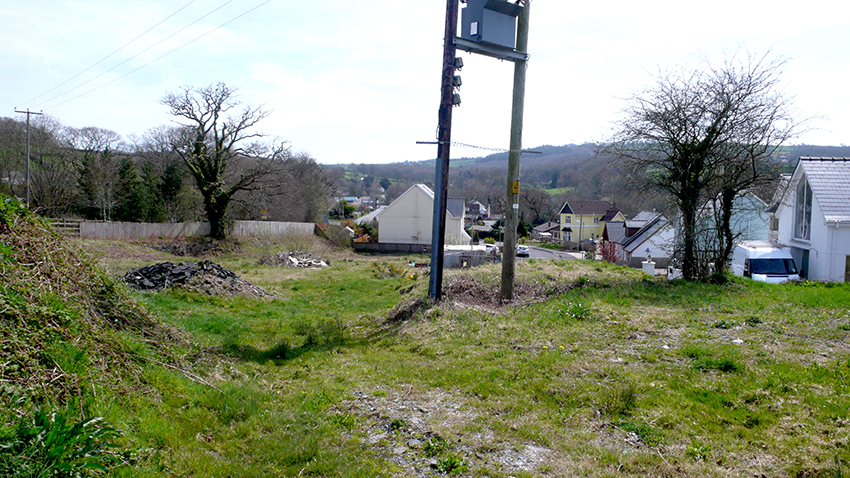As foretold in my previous post, I made a trip to Swansea over the weekend. Having grown disenamoured of Premier Inns the wife and I decided to try the Marriott Hotel overlooking the Marina, or the fish dock as I recall it from a long, long time ago.
Because in our early teens a crowd of us would cycle down to the fish dock in the evenings, and to the big fish merchants’ shed, open on three sides, its floor always covered in fish parts and ice, for some special cycling. Special because, in addition to the detritus covering the floor, the floor itself sloped gently towards the dock to make it easier for hosing said ice and fish parts into the dock. (An operation never fully completed.)
The idea was to build up speed from some distance away then see who could stay up on two wheels for the greatest distance inside the shed. If memory serves after more than 50 years, the champion was Dai Evans, who went on to join the Fleet Air Arm, and was lost when the helicopter in which he was an observer went down while searching for the Hull trawler / spyship M V Gaul.
I have no doubt that one day this exhilarating sport will be revived and take off. I look forward to seeing athletes from around the world slide across a sloping course covered in ice and cod innards competing for the Dai Evans Memorial Cup.
We arrived at the Marriott with these cherished memories fresh in my mind.
*
There was a parcel waiting for me in reception. It was a box of leaflets urging us to vote for Arfon Jones in May’s Police and Crime Commissioner election. Now I’m not entirely sure we need PCCs, but if we must have them then let’s have people who a) know and identify with the area, and b) understand how Gogplod and other forces work.
After settling in to our room and reading Private Eye for a bit I felt the need for a nightcap or twa. So I sauntered down to the bar and ordered a large glass of Cabernet Sauvignon . . . which cost me £10.60! I shall repeat that – ten pounds bloody sixty. I thought to myself, ‘For that kind of money, Jones, you could get two bottles in the Co-op or Spar’. Listen Marriott, for a mediocre wine in a matchingly mediocre hotel, £10.60 is an absolute rip-off. As are your other prices. (Needless to say, for Saturday night I bought a bottle.)
As an aside . . . Someone told me something very odd about the Marriott hotel in Swansea (which I should have checked out). My source insists that it’s the wrong way round! By which he means that the side of the hotel overlooking the beach and the bay is taken up entirely with kitchens and other service areas, which means that despite being a stone’s throw from the beach no rooms offer sea views. If true, then someone screwed up big time.
*
Saturday morning we went down for our ‘Full Welsh Breakfast’, though when we got to the dining room and surveyed what was on offer it was difficult to see anything that qualified as being specifically Welsh, unless the sausages, eggs, bacon, etc., had been locally sourced.
More in hope than expectation I asked the woman restocking the self-service counter if there was any laverbread to be had. To my surprise she answered in the affirmative – but it was hidden away somewhere in the kitchen!
Listen up again, Marriott. You are advertising a ‘Full Welsh Breakfast’ – just a hoot and a holler from Swansea Market – yet the local delicacy is hidden away as if it’s something to be ashamed of!
Swansea caviar should be proudly displayed, with a card explaining that it cures everything from gout to impotence, and furthermore it reverses baldness when applied liberally to the scalp and left for a few weeks to work its magic.
*
Something I should have mentioned just now – and another reason I needed a drink on Friday night – was that I’d bought the Evening Post and there, on the front page, it shrieked – ‘RUCK’S BACK! Outspoken Columnist Makes His Return ‘.
Knowing you’d want to read the wit and wisdom of the now recovered Jools (our prayers were answered!) I brought the ‘paper home and scanned it for you. So read on . . . (And if you really do want to read it you’ll need to click on the image to open it in another window and then enlarge it.)
The hotel was busy on Saturday, what with the Norwich City squad staying there, a wedding reception, and various other comings and goings. We left the hustle and bustle behind to visit Cwmgelli cemetery where my parents and grandparents are buried to lay a Mother’s Day wreath before heading back into town and parking the car outside the hotel.
*
Now to the Liberty Stadium and the vital game against Norwich. I made the mistake of getting a bus from the Quadrant bus station, a mistake because it would have been quicker to bloody walk. Even so, I still managed to meet up with my son at 2:30 and in we went. Our seats were at the very front, right by the stairway, at pitch level, and very close to the visiting fans, who were in good voice.
To our left were the modern counterparts of the old Vetch Field North Bank crowd exchanging (relatively) good-natured banter with the visitors from East Anglia. I was a North Banker myself back in the days of Harry Griffiths and Herbie Williams, Keith Todd and Brian Evans, Lennie Allchurch and Jimmy McLaughlin. (No, missus, North Banker is not rhyming slang.)
I suppose that’s the big difference between live football and watching a game on the telly. The latter can show you almost everything, from every conceivable angle, it can run replays and offer analyses, but it cannot convey the atmosphere, it cannot show you what the fans are up to, or anything else happening away from the cameras, especially the small incidents that go unnoticed by almost everyone except those directly involved.
Sitting on a little stool in front of us, on the other side of the gate that gave access to the pitch area, was a steward of some kind, a single-minded jobsworth of a woman who clearly believed that The Three Hundred had it easy compared to her. Nor did her responsibilities end with guarding that gate. As one poor bugger found out.
A young guy sitting a few seats in from us went at half time to get refreshments and returned triumphant with a box of chips and a glass of beer. Christ! when the steward saw the beer she flipped. After haranguing him she quickly dispossessed him, and then, holding the beer solemnly at arm’s length, marched to a point where she could hand the offending liquid to another steward . . . who probably drank it.
The game itself was poor fare, but given the circumstances, a win was more important than entertainment. After Swans scored the only goal the Norwich fans fell relatively silent, perhaps resigned to watching Championship football next season. This of course was the Neo North Bankers cue to start up with, ‘It’s all gone quiet over there’.
As ever, a big disappointment was seeing the union flag that marks the location of the local fascist crew. These people are an embarrassment to the club and an insult to a city that only last month remembered the three-nights blitz of February 1941 that saw the Luftwaffe bomb Swansea, including the house my parents had rented, just six days after they’d got married.
Think about that. Their home town bombed by the air force controlled by the man they worship! I bet these bastards will be supporting England at Euro 2016 – even in the Wales v England game.
It will be interesting to see whether the British National Party they support puts up candidates for May’s Assembly elections or whether they’ll tell their people to vote Ukip.
At the final whistle my son shot off to get to his car and quickly out of town, leaving me to make my way the three miles back to the hotel. To begin with I was in a surge of a few thousand people all heading the same way, down through the Hafod neighbourhood, haunted by pubs I’d known that are no longer there – The Mexico Fountain, Jersey Arms, Hafod Inn . . .
The crowd gradually thinned out until I found myself by the Castle Gardens where some belated St. David’s Day event was packing up, and before I knew it I was alone and risking life and limb to cross Oystermouth Road.
*
Unsure where to eat on Saturday night, my first thought was the Uplands, reasoning that sophisticates like Councillor John Boy Bayliss and his friends must have attracted exciting eateries to the area. And so it appeared – everything from KFC to Vietnamese cuisine – as I drove around in a fruitless search for a parking space. ‘What the hell, let’s head for Mumbles’.
(Having mentioned John Boy gives me the excuse to digress for a mo. I hear that his mentor and former council leader, David ‘Il Duce‘ Phillips, is close to complete ostracisation from the local Labour Party. While it is further alleged that Phillips’ successor, Rob Stewart, may be no more than a figurehead, with the real power being wielded by the Anglo-Austrian Trotskyite duo Bob and Uta Clay, plus a few others they’ve gathered around them.)
And it came to pass that Mrs Jones and I found ourselves in the cheap but cheerful White Rose on Oystermouth Square. My first visit to this pub for many years.
The last time I was there I was resplendent in a very sharp powder blue suit, with a pink shirt and a blue striped tie. Perhaps selective amnesia spares me the memory of what shoes I wore. (Though yellow leather keeps flashing into my consciousness!) Anyway, I’m sure you can make your own suggestions as to what footwear might have best completed the ensemble. Or perhaps you’re still thinking, ‘Did he really say a powder blue suit!’
Whatever I might have been wearing I bumped into a guy I used to work with. His wife had just left him, so we drowned his sorrows and ended up back at his – now empty – house in Bishopston.
*
When we went down for breakfast on Sunday morning the woman at the breakfast bar remembered me and immediately went to get the laverbread. Breakfast was OK, and even enlivened by an incendiary incident.
The toaster had a sign nearby which said, ‘Only use pre-sliced bread in this toaster’. Fair enough. A Chinese family came in and the daughter – in her early twenties I’d guess – looked at the toaster, then cut a chunk off a French loaf and forced it into the horizontally aligned, conveyor belt-type toaster. I watched enthralled, and sure enough, the inevitable happened.
She must have realised what she’d done but our oriental visitor returned to her table as if nothing was wrong. It was left to public-spirited moi to alert staff once the flames started licking out the front of the machine.
Anyway, despite my little moans it was nice to have a few days in the city I love. I hope you’ve enjoyed my account of the visit.
*
I head back south on Wednesday for the funeral of an old friend and comrade. We’ll stay somewhere Wednesday night (but definitely not the bloody Marriott!) and come home late on Thursday. My daughter is home for the weekend on Friday, then it’s a rugby weekend, so don’t expect another post until next week . . . though I do have a few interesting irons in the fire.
In addition to those ‘irons’, I have just heard from Wynne Jones down in Cardigan that contractors employed by Mill Bay Homes – the properties-for-sale arm of Pembrokeshire Housing – has carried out unauthorised work and in so doing damaged culverts and raised the flood risk on adjoining land.
Having come to know Wynne Jones I can guarantee that Mill Bay’s latest show of contempt for planning procedures and disregard for the property of others will not pass unnoticed.


























